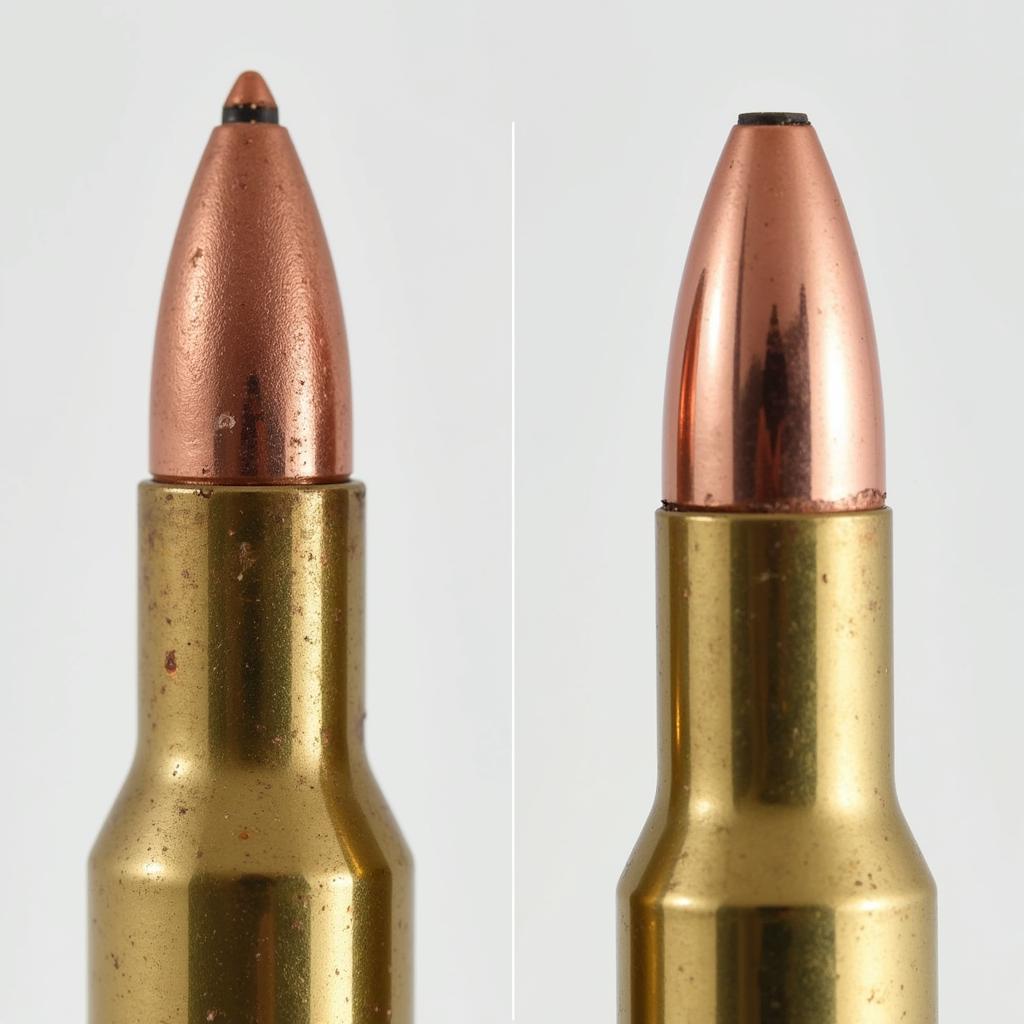Understanding the Controversy: 30 Cal Armor Piercing Bullets
October 28, 2024The term “30 Cal Armor Piercing Bullets” often sparks debate and raises concerns about safety and intended use. This article aims to provide a comprehensive overview of this specific type of ammunition, exploring its history, mechanics, and the regulations surrounding its use.
A History Forged in Conflict
The development of armor piercing ammunition went hand-in-hand with advancements in military technology. As protective armor became more sophisticated, the need for projectiles capable of penetrating such defenses grew. Early examples of armor piercing rounds emerged in the late 19th and early 20th centuries, primarily designed to pierce sheet metal and other light armor used in military vehicles.
The Science Behind the Penetration
What sets 30 caliber armor piercing bullets apart from standard ammunition is their construction. While standard bullets typically consist of a lead core encased in a copper jacket, armor piercing rounds incorporate a hardened steel or tungsten carbide core.
This dense, hardened core is designed to withstand the initial impact and maintain its shape, allowing it to punch through armor plating that would deflect or deform traditional bullets. The surrounding jacket material helps to reduce friction and improve the bullet’s ballistic performance.
Regulations and Concerns
The inherent ability of 30 cal armor piercing bullets to defeat armor has led to legitimate concerns about their potential misuse. In many countries, including the United States, the sale and ownership of armor piercing ammunition are subject to strict regulations. These regulations are often aimed at preventing criminals from accessing ammunition that could pierce body armor commonly worn by law enforcement officers.
Beyond the Battlefield
While military and law enforcement applications drove the initial development of armor piercing ammunition, there are also specific, controlled uses outside of these realms. For example, certain types of armor piercing rounds are used in specialized industries for tasks such as:
- Industrial applications: Penetrating thick metal, concrete, or other hard materials in controlled settings.
- Long-range shooting: The aerodynamic properties of some armor piercing bullets can be advantageous in long-distance target shooting competitions.
 Comparison of Armor Piercing and Standard Bullets
Comparison of Armor Piercing and Standard Bullets
Understanding the Risks and Responsibilities
The debate surrounding 30 cal armor piercing bullets highlights the need for responsible use and understanding of ammunition capabilities. While these rounds have legitimate applications, it’s crucial to acknowledge the potential risks associated with their misuse.
Regulations, education, and responsible ownership are all crucial components in ensuring that armor piercing ammunition is used safely and ethically.
Conclusion
The topic of 30 cal armor piercing bullets is complex and multifaceted. By understanding the history, mechanics, regulations, and potential risks associated with this type of ammunition, we can foster a more informed and nuanced discussion. Responsible use, awareness, and adherence to existing laws are paramount in ensuring that these specialized rounds serve their intended purposes without compromising public safety.
For immediate assistance or to learn more, please contact us:
Phone: 0915117113
Email: [email protected]
Address: Tổ 3 Kp Bình An, Phú Thương, Việt Nam, Bình Phước 830000, Việt Nam
Our dedicated customer support team is available 24/7 to assist you.